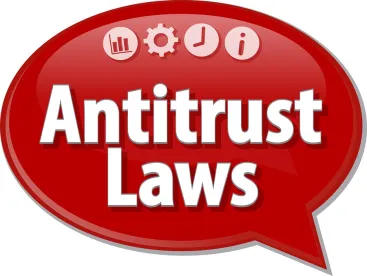As has been expected, on January 18, 2022, the Federal Trade Commission (“FTC”) and Antitrust Division of the Department of Justice (“DOJ”) announced in a joint press conference an initiative to review and revise the antitrust merger guidelines. In his competition Executive Order last summer, President Biden announced a policy calling for increased scrutiny of mergers. Against this backdrop, one would expect the effort would result in the toughening of standards over what currently is found in the existing guidelines.
In their joint press conference, FTC Chair Lina Khan and DOJ Assistant Attorney General for Antitrust Jonathan Kanter emphasized that they were first soliciting public input on how the guidelines should be changed. Then, as has been done previously, proposed guidelines will be made public for additional comment, before new guidelines are finalized.
But there is little doubt regarding the direction the agencies are headed. Public input is being sought “on ways to modernize federal merger guidelines to better detect and prevent illegal, anticompetitive deals in today’s modern markets.” Comments are currently due March 21, 2022.
In her remarks, Chair Khan indicated that “[i]llegal mergers can inflict a host of harms, from higher prices and lower wages to diminished opportunity, reduced innovation, and less resiliency.” “This inquiry launched by the FTC and DOJ is designed to ensure that our merger guidelines accurately reflect modern market realities and equip us to forcefully enforce the law against unlawful deals.”
Similarly, Assistant Attorney General Kanter suggested “[we] need to understand why so many industries have too few competitors, and to think carefully about how to ensure our merger enforcement tools are fit for purpose in the modern economy.”
The Request for Information also issued yesterday contains over 90 subparts worth of questions. The agencies expressly solicited comments from market participants, government entities, economists, attorneys, academics, unions, workers, farmers, ranchers, businesses, franchisees, and consumers. The questions were grouped into both familiar topics and ones that have not previously received attention in the merger guidelines:
-
Purpose, Harm, and Scope
-
Types and Sources of Evidence
-
Coordinated Effects
-
Unilateral Effects
-
Presumptions
-
Market Definition
-
Barriers to Entry and Growth
-
Potential and Nascent Competition
-
Remedies
-
Monopsony Power and Labor Markets
-
Innovation and IP
-
Digital Markets
-
Special Characteristics Market
-
Efficiencies
-
Failing and Flailing Firms
In her remarks, Chair Khan emphasized three points:
“First, are the guidelines adequately attentive to the range of business strategies and incentives that might drive acquisitions, be it moat-building or data-aggregation strategies by digital platforms, or roll-up plays by private equity firms? More broadly, how should the guidelines analyze whether a merger may “tend to create a monopoly,” including in its incipiency, or whether there is a “trend toward concentration” in the industry? Second, do the guidelines adequately assess whether mergers may lessen competition in labor markets, thereby harming workers? Are there factors beyond wages, salaries, and financial compensation that the guidelines should consider when determining anticompetitive effects? And when a merger is expected to generate cost savings through layoffs or reduction of capacity, should the guidelines treat this elimination of jobs or capacity as cognizable “efficiencies”? Third, are the guidelines unduly limited in their focus on particular types of evidence? Are there certain markets where the guidelines should provide a framework to assess direct evidence of market power? What types of indicia of market power should the guidelines consider? And more generally, what types of evidence should the guidelines consider in evaluating nonprice effects?”
Assistant Attorney General Kanter also emphasized three areas where he is particularly interested in receiving comments:
“First, the statutory text of the Clayton Act prohibits mergers that “may be substantially to lessen competition, or tend to create a monopoly.” So often merger enforcement focuses on that first prong, but it is worth considering if we are being faithful to the full language of the Clayton Act, for instance in how we assess transactions by already dominant firms.
Second, the guidelines have bifurcated horizontal and vertical analysis, yet often transactions don’t neatly fit into these categorizations. Does the framing of horizontal versus vertical analysis itself narrow us to a two-dimensional view of modern markets that are often multi-dimensional? How should the guidelines account for these those market realities?
Relatedly, too much has been made of the purported divergence between the DOJ and FTC on the treatment of vertical mergers. The Antitrust Division shares the FTC’s substantive concerns regarding vertical merger guidelines. Those guidelines overstate the potential efficiencies of vertical mergers and fail to identify important relevant theories of harm. Market participants and courts should understand the Vertical Merger Guidelines only in the context of the broad-based review and overhaul, which we are launching today.
Third, market realities should drive the antitrust analysis, not merely market definition. In a dynamic, multi-dimensional economy, the static formalism of market definition may not always be the most reliable tool for assessing the potential harms of mergers. We hope to learn more about additional tools that rely on direct sources of evidence, such as other indicia of market power or of head-to-head competition between merging parties, that may be more reliable in some situations. When we do focus on market definition, I also wonder whether we should do more to capture the dynamism of the economy. Stacks or clusters of component products and services often come together to drive both digital and physical supply chains—should we more thoughtfully consider competition within a market or for a market?”
As can be seen from this brief overview, this proceeding is intended to serve as a springboard for potentially tectonic shifts in federal government antitrust merger enforcement. The FTC and DOJ will receive comments from all over the economy, making points pro and con changing current enforcement. However, it is likely that Chair Khan and Assistant Attorney General Kanter already know the destination to where they are heading. This proceeding—the proposed guidelines—and the final guidelines need to be carefully watched by those who plan, participate, and are affected by merger activity that affect the United States.







 />i
/>i
